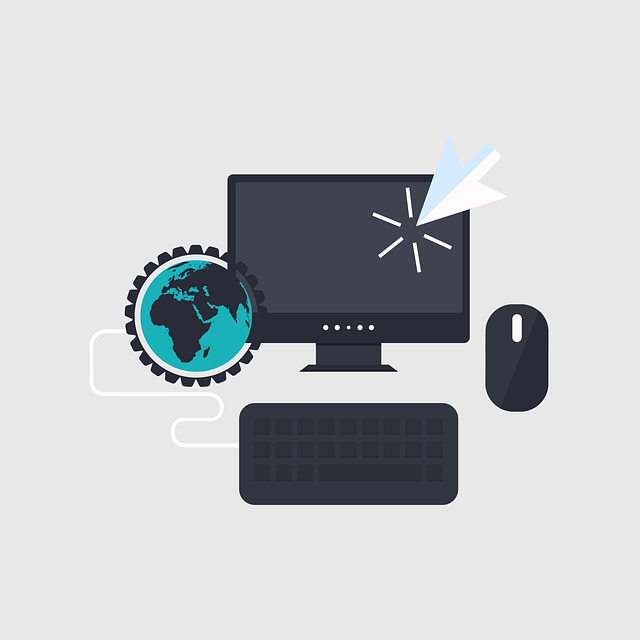AI predictive maintenance for kitchen equipment is transforming the food service industry by using machine learning algorithms to analyze sensor data from appliances, enabling businesses to proactively schedule maintenance, optimize resources, and minimize unexpected breakdowns. This approach significantly reduces downtime, lowers costs, enhances food safety, and maintains high hygiene standards and service quality. Implementing AI-driven predictive maintenance offers substantial benefits, including improved operational efficiency, better scheduling, enhanced productivity, effective inventory management, and ultimately, higher customer satisfaction. Best practices include data quality assurance, standardized formats, model validation, collaboration between IT and kitchen staff, and regular model updates to maintain accuracy as equipment usage patterns evolve.
In today’s digital era, businesses are increasingly turning to Artificial Intelligence (AI) to enhance operational efficiency. One area where AI is making waves is kitchen equipment management, particularly through predictive maintenance. This article explores how AI predictive maintenance for kitchen equipment can revolutionize food service operations. We delve into the benefits of implementing such systems and provide strategies and best practices for successful AI integration. By understanding AI predictive maintenance, businesses can optimize their kitchen equipment management, leading to cost savings and improved productivity.
- Understanding AI Predictive Maintenance for Kitchen Equipment
- Benefits of Implementing Predictive Maintenance in Food Service Operations
- Strategies and Best Practices for Successful AI Integration in Kitchen Equipment Management
Understanding AI Predictive Maintenance for Kitchen Equipment

AI predictive maintenance for kitchen equipment is transforming the way restaurants and food service businesses operate. By leveraging machine learning algorithms, AI systems can analyze vast amounts of data from sensors installed on equipment to predict when repairs or replacements are needed. This proactive approach significantly reduces downtime and improves operational efficiency by minimizing unexpected breakdowns.
With AI predictive maintenance, businesses can stay ahead of maintenance schedules, optimize resource allocation, and lower maintenance costs. Moreover, it enhances food safety by ensuring that critical kitchen appliances, such as ovens, refrigerators, and dishwashers, are always in top working condition. This technology is a game-changer for the industry, offering greater control and reliability in maintaining high standards of hygiene and service quality.
Benefits of Implementing Predictive Maintenance in Food Service Operations

Implementing AI-driven predictive maintenance in food service operations offers significant advantages. By leveraging machine learning algorithms to analyze sensor data from kitchen equipment, businesses can anticipate and prevent equipment failures before they disrupt service. This proactive approach minimizes downtime, optimizes resource allocation, and reduces costly emergency repairs.
Predictive maintenance also enhances overall operational efficiency. With AI, food service providers can schedule maintenance activities more effectively, ensuring that critical equipment is serviced regularly without unnecessary intervention. This results in improved kitchen productivity, better inventory management, and ultimately, enhanced customer satisfaction through consistent service quality.
Strategies and Best Practices for Successful AI Integration in Kitchen Equipment Management

Integrating AI into kitchen equipment management is a game-changer for operational efficiency, offering advanced strategies for predictive maintenance. By leveraging machine learning algorithms, businesses can anticipate equipment failures before they occur, minimizing costly downtime and maximizing uptime. This proactive approach involves analyzing historical data to identify patterns and predict potential issues, enabling maintenance teams to schedule repairs precisely when needed. AI can also optimize inventory management by forecasting spare part requirements based on equipment usage trends.
Best practices for successful AI integration include ensuring data quality and accessibility, as AI models rely on accurate, comprehensive datasets. Standardizing data formats and regularly validating the model’s performance are essential. Collaboration between IT teams and kitchen staff is vital to provide real-world insights and ensure the AI system remains aligned with operational needs. Additionally, continuous learning and adaptation are key; as equipment and usage patterns evolve, the AI model should be updated accordingly to maintain its predictive accuracy.
AI predictive maintenance for kitchen equipment offers food service businesses a competitive edge by streamlining operations and minimizing downtime. By leveraging advanced algorithms, these systems anticipate equipment failures before they occur, reducing costly repairs and enhancing overall efficiency. Implementing AI predictive maintenance strategies not only benefits bottom lines but also ensures consistent meal quality and customer satisfaction, making it an indispensable tool in modern kitchen management.
